Stanunathaswami temple,suseenthiram,kanyakumari
Construction of the Stanunathaswami temple at Auchindram (12km northwest of Kanniyakumari) extended over a period of at least six hundred years. Parts date back as far as the ninth or tenth century, others from the fifteenth century, and a huge seven-storey pyramidal gopura was erected during the sixteenth. Although its main sanctuary houses a shivalingam, the temple is jointly dedicated to Brahma, Vishnu and Shiva. Its proudest boasts are "musical" pillars, which emit a chime when struck, and an extraordinarily tall (3m) figure of Hanuman. A special puja takes place at sunset (around 6pm) every Friday, with music and a procession. Male visitors must remove their shirts before entering. Thanumalayan temple
The Thanumalayan temple, here, is a repository of art treasures, belonging to many kingdoms. The presiding deity in the form of a Linga, denotes Shiva, Vishnu and Brahma. Inscriptions, said to be of the 9th century AD, can be found in this temple. The temple is also famous for a huge statue of Hanuman and its musical pillars. |
Kumari Amman temple,
kanyaakumariThe seashore Kumari Amman temple is dedicated to the virgin goddess Kanya Devi, who may originally have been the local guardian deity of the shoreline, but was later absorbed into the figure of Devi, or Parvati, consort of Shiva. One version of Kanya Devi's story relates how she did penance to win the hand of Shiva. The god was all in favour and set out from Suchindram for the wedding, due to take place at midnight. The celestial devas, however, wanted Kanya Devi to remain a virgin, so that she could retain her full quota of shakti or divine power, and hatched a plot. Narada the sage assumed the form of a cock and crowed; on hearing this, Shiva, thinking that it was dawn and that he had missed the auspicious time for the ceremony, went home. The image of Kanya Devi inside the temple wears a diamond nose stud of such brilliance that it's said to be visible from the sea. Male visitors must be shirtless and wear a dhoti before entering the temple. It is especially auspicious for pilgrims to wash at the bathing ghat here
¤ The Sri Parthasarathy TempleEstablished in the Triplicane area of Chennai, Sri Parthasarathy Temple is dedicated to Lord Vishnu who is worshiped as Lord Venkatakrishnar here. In this temple he can be seen with his consort Rukmani on his right and his brother Sri Balaraman on his left. Apart from these deities, Sri Parthasarathy is installed as a processional deity with his consorts Sri Devi and Bhoo Devi on either side.
¤ The Divine Palaniandavar Temple,palani
The Palaniandavar temple is dedicated to Lord Subramanyam and he is worshiped as Pazhani andavar. The temple is situated at Vadapalani, in the northern part of Chennai. A picture of Lord Subrahmanya was brought here from Palani that became a very potent divinity, thus deriving the name Vadapalani.
¤ The Holy Island of Rameswaram Rameswaram is an island about 160 km Southeast of Madurai, well connected to the mainland both by a railway and a road bridge. A major pilgrim center of the Hindus, Rameshwaram is the place where Lord Rama had stationed the Lingam, which therefore gains significance and is venerated by all the Hindus of India. The other pilgrimage site here is Dhanuskodi, also called 'Sethu'. Apart from this, there are several other small temples of interest dotted around this island.
¤ Swamimalai, The Adobe of Subramanyam
Swamimalai is one of the 6 well known abodes of Lord Subramanya. The temple stands on an artificial hill and is approached by a flight of steps. Swaminathan is the deity worshiped her. The temple here has three 'gopuram' with three 'praharam'. The 'gopuram' on the south side of the temple is decorated with statues and contains five storeys while the other two entrances have no towers above them.
¤The stoen Rock Fort Temple at Tiruchirapalli is the most famous land mark of this busy town. It is a spectacular monument, outcropped out of a massive stone rock, which rises abruptly from the plain to tower over the old city. It is as high as 83 m and as old as 3.800 million years, older than the rocks of Greenland and the Himalayas.

The Rock Fort temple complex in Tiruchirappalli is an aggregate of three temples - the Manikka Vinayaka temple situated at the foot of the hill, the Uchhi Pillayar Koyil situated at the top of the hill and the Taayumaanava Koyil (Shivastalam) situated on the hill.
This extraordinary temple has a 100-pillared hall, and a Vimana, veiled with gold. The southern side of the rock, has several beautifully carved, rock-cut cave temples, of the Pallava period. This temple was built by the Nayaks, who established the city of Tiruchirapalli. During the British-French struggle, the Rock Fort Temple was one of the main centers, around which, the wars of the Carnatic were fought in the 18th century
The Famous Meenakshi Temple,madurai
The Meenakshi Temple complex is a city temple situated in Madurai. It is one of the largest and one of the most ancient temples here. At the same time it is the most revered in India. The temple complex has soaring and exquisitely carved towers in Madurai. The south gateway contains the twin temples of Shiva and Meenakshi and is about nine storeys high. Meenakshi temple is one of the most popular temples in Tamil Nadu and is world famous for its marvelous architecture.
The Natarajh of Chidambaram
This temple is dedicated to lord Natarajah and is one of the most venerated. Chidambaram is situated about 250 km south of Chennai (Madras) and is easily accessible. In Tamil the word temple is known as 'Koil' and Chidambaram is referred to, in Hindu scriptures by other names such as Thillai, Puliyur, Chittambalam, Vyagrapuram and Pundareekapuram. These temples are abode of sanctity and sacredness due to its dignity and the miracle stories mentioned in Hindu scriptures
Kapaleeswarar Temple,chennaiThe Kapaleeswarar temple, situated in Mylapore a suburb of Chennai, is dedicated to Lord Shiva, who is worshiped here as Kapaleeswarar and the Goddess as Katpahavalli. This temple is about 1000 years old. Some scholars believe that the age of the present building , on the basis of the architecture and the images in this temple traces back to a period of about 300 years ago. Regardless, Kapaleeswarar Temple has become very famous and attracts a large number of devotees mainly during festival day
Thanjavur
Location : Thanjavur District, on the eastern coast of Tamil Nadu
Area : 3603 sq. kms.
Attractions : Bragatheeswarar Temple, Thanjavur Palace, Tanjore Paintings
Ideal Time to Visit : November to January

Thanjavur is situated halfway between Tiruchirappalli (60km) and the coast. It is 35km southwest of Kumbakonam and 334 km south of Chennai. Thanjavur was the capital city of Chola kingdom from the 9th to the 13th centuries. It is the granary of South India and is known as the rice bowl of Tamil Nadu. This royal city has a rich and varied heritage for which it is known across the globe. Thanjavur was the center of knowledge and culture which reached its peak between the 10th and 14th centuries, under the reign of the Cholas.
The Chola dynasty was a celebrated dynasty of South India and Sri Lanka. They build many temples in order to mark the their victories over other dynasties. There are more than 70 temples in Thanjavur, the most important being the famous Brihadeeswara Temple.
¤ HistoryThe ancient city of Thanjavur is the center of classical arts and music inspite of the advent of technology era. The performances by the classical musicians, percussionists and the Bharatnatyam dancers never fails to enchant you. Then there is the exquisite Tanjore style of painting, which attracts innumerable tourists. The paintings are developed over multiple layers and are usually centered on the Hindu Gods and Goddesses.
The city of Thanjvur is named after, a demon by the name of Tanjan-an asura. According to the legend the last wish of the demon was that the place should be named after him, which was granted by Sri Anandavalli Amman and Sri Neelamegapperumal.
¤ Attractions At Thanjavur
Thanjavur is famous for its majestic temples, but there are many other attractions present here, which are worth visiting. Among the temples, most important is the Bragatheeswarar temple, also known as the Big Temple of Thanjavur. It was built by Rajaraja Cholan, the Great Chola king. This temple is an ideal example of the grandeur of Indian sculptural architecture. Another important attraction here is the Saraswati Mahal Library. Established around 1700 AD, it has one of the most vital oriental manuscripts collections, in India. Apart from these, a major highlight of the Thanjavur city is the Thanjavur Palace, situated on the east main street. It is a series of large and rambling buildings of fine masonry, built partly by the Nayaks and partly by the Marathas around 1550 AD.
One of the most notable attractions in Thanjavur is Tamil University, established in 1981. Tamil University Museum has a collection of coins and musical instruments. Another attraction here is the Schwartz Church, situated in the palace garden. It was built in 1779 A.D by Rajah Serfoji. At Thanjavur, there are many famous museums having interesting collections of stone sculpture, coins and musical instruments. Among these the Nayak Durbar Hall Art Museum and the Rajaraja Chola Museum are the most important. They contain magnificent collection of Chola Bronzes-all discovered locally.
Last but not the least, the Tanjore Paintings of Thanjavur are famous for their special style of decorating the paintings. They are done both on glass and board. In both types, the figures and the background are richly ornamented with gold leaf and gems. The theme of these paintings are mostly related to Krishna in which he is shown in various poses. But there are also various paintings in temples, of all the other Gods and Saints
Stanunathaswami temple
Construction of the Stanunathaswami temple at Auchindram (12km northwest of Kanniyakumari) extended over a period of at least six hundred years. Parts date back as far as the ninth or tenth century, others from the fifteenth century, and a huge seven-storey pyramidal gopura was erected during the sixteenth. Although its main sanctuary houses a shivalingam, the temple is jointly dedicated to Brahma, Vishnu and Shiva. Its proudest boasts are "musical" pillars, which emit a chime when struck, and an extraordinarily tall (3m) figure of Hanuman. A special puja takes place at sunset (around 6pm) every Friday, with music and a procession. Male visitors must remove their shirts before entering. Thanumalayan temple
The Thanumalayan temple, here, is a repository of art treasures, belonging to many kingdoms. The presiding deity in the form of a Linga, denotes Shiva, Vishnu and Brahma. Inscriptions, said to be of the 9th century AD, can be found in this temple. The temple is also famous for a huge statue of Hanuman and its musical pillars. |
¤ Kanchipuram, The City of Temples
One of the most sacred sites in India, Kanchipuram is the seat of the Shankaracharya. The city is situated around 70 kms from Chennai in the south Indian state of Tamil Nadu. Kanchipuram was the capital city of the early Chola kings in the 2nd century BC and a Pallava capital between the 6th and 8th centuries.

Known as the city of thousand temples, it is one of the seven most sacred pilgrim centers for the Hindus. Kanchi has about 126 temples remaining in total and a few more in its outskirts.
Besides its temples, Kanchipuram is also known for its growing hand loom industry. This beautiful small city has many silk weavers residing here from more than 400 years ago. This has made it the best the producer of some of the finest silk sarees in the country. The Kanchipuram silk sarees are exotic pieces of art, woven from pure mulberry silk. Available in a variety of designs, these sarees have blazing colours and are decorated with fine gold thread (zari).
¤ HistoryThe ancient city of temples, Kanchipuram, is one of the most important centers of Hindu religion. It is also one of the most picture perfect towns. It is considered one of India's seven sacred cities and the second holiest city after Varanasi.
It was once the capital city of the Pallavas, Cholas, and the Vijayanagar rulers. Many of the temples situated here are built by the Pallavas and later Cholas.
A few Buddhist stupas remining here indicate the presence of Buddhism in earlier centuaries. The Kanchi Kamakotti Peetham situated here is one of the four seats of Sri Adi Shankaracharya (a great Hindu sage). It has been a center of Tamil learning and culture for centuries and presents the glorious Dravidian heritage of the Vaishnavites (worshippers of Vishnu) and Shaivites (worshippers of Shiva).
¤ Attractions At Kanchipuram
Kanchipuram is a scared pilgrimage with many beautiful temples, the holy town is one of the holiest places in India. The temples found here are grand and majestic. They are very popular among devotees, who flock this temple in huge numbers. Some of the most important temples here are the Ekambaranathar Temple, built by the Pallavas and later reconstructed by the Chola and Vijayanagar kings, that makes excellent trip to Kanchipuram. This temple owns 11 stories and one of the tallest temple towers in South India. It is beautifully decorated with sculptures. Another sacred temple here is the Vaikunta Perumal Temple which dates back to the 8th century. It was built by Nandivarma Pallava. There are scenes from battle carved on the panels encircling the main parikrama of this Vaishnavite temple. These scenes depict the bravory of Pallava kings. Anothere temple, the Varadaraja Temple is dedicated to Lord Vishnu who is worshipped as Devarajaswamy here. This temple has a 100-pillared hall, built by the Vijayanagar kings presenting the skillfulness of their artists.
Other important temples of the region are the Kailasanathar Temple and the Kamakshi Amman Temple. The Kailasanathar Temple was constructed by the Pallava kings in the 8th century AD. It has a captivating panel portraying Lord Shiva and Goddess Parvati in the midst of one of their many dance competitions. The architecture of this temple resembles the Shore Temple at Mahabalipuram. At the same time the Kamakshi Amman Temple has a grand structure, dedicated to goddess Parvati in her incarnation as Kamakshi, the goddess of Love.
¤ Excursions Kanchipuram extends its sacredness and beauty to its nearby areas also. Thus, offering a number of excursion trip options. Some of these are Tiruttani near Kanchipuram, one of the six abodes of Lord Subramanya, situated on a hilltop. The temple has 365 steps, leading to the hill, these steps represent the days of the year. Another important trip is to the Sriperumbudur, situated about 29 kms from Chennai on the way to Kanchipuram. It is the birthplace of Saint Ramanujar, the father of the Vishishtadvaita philosophy of Vaishnavism and hence an important pilgrim center for the Vaishnavites.

One of the most vital places around Kanchipuram is the Vedanthangal Bird Sanctuary sitauted about 60 km from Kanchi. On your bird sighting trip to Kanchipuram, one can find many migratory birds like the sandpiper, white ibis, spoonbill, swan and gray wagtail etc. Definitely, a worth visiting place. Another destination around Kanchi is the Elagiri Hill. This hill is a detached and a popular picnic spot in the Eastern Ghats situated at a height of about 1000 m. The healthy climate, natural beauty and a Murugan temple makes it a must visit place.
¤ Fairs & FestivalsKanchipuram, the city of temples celebrates fairs and festivals all round the year. Some important festivals include the Brahmothsavam, Garudothsavam, and Car (rath) festivals, celebrated in the months of January, April, and May respectively
Nataraja temple,chidamparam
The original temple was built during the 6th-8th centuries. There are four tall gopurams and on the eastern tower, rising to 40.8 metres, are carved the 108 dance poses of Bharatanatyam. The whole temple spreads to around 40 acres. The temple is built based on the strict kundalini chakra orientation and according to the shiva siddhanta philosophy.
The Nataraja Temple has five halls - the Nritta Sabha, Deva Sabha, Kanaka Sabha, Chit Sabha and Raja Sabha. The Nritta Sabha is held aloft by 56 pillars engraved with dancing figures. 6 kaal natana mantapam is in nirithya sabha. The Deva Sabha is reserved for festivals and administrative meetings. The 1000-pillared hall (ayiram-kal-mandapam) of Raja Sabha, measuring 103m long and 58m wide witnessed the victory celebrations of the Chola and Pandya kings. It is a great place for meditation. The most important of these sabhas is the gold-tiled Kanaka Sabha (the glistening roof contains 17,500 solid gold tiles, one for each breath a human takes in a day.), resides the bejewelled, joyous Nataraja image. The icon is a stunning piece of sculpture that evokes a sense of continuous movement. Next to Him, Goddess Shivakamasundari stands majestically in a separate sannithi.
Worshipping the five eternal elements, the temple at Tiruvannamalai has a fire lingam, Kancheepuram has the earth lingam, kalahasthi, the wind lingam, Jambhukeshvar is water and Chidambaram, the aahaya (sky) lingam. So when the priest draws back the curtain from the inner shrine of the presiding deity in the Chit Sabha, there is no lingam or dancing Nataraja to be seen. Only space. This is the charming mystery of Chidambaram - rahasya. The other meanings of this rahasya are passed on from disciple-guru basis, but can be found in books like 'Chidambaram mahatmyam' written in sanskrit. The pujas in the temple are conducted strictly according to the specifications by Patanjali (of the yoga suutras).
The Lord at Chit Sabha is worshipped by Three Shaktis. The Iccha shakti is beside Lord Nataraja as Shivakamasundarii, jnana shakti as shivakamasundarii in Her separate temple and Durga, as described below, is the kriya shakti. Further, outside the shivakamasundari shrine is a tiny shrine to the spouse of Shiva at Jambukeshvara, Akhilandeshvari. There is also a small shrine to Durga adjoining this temple.
The sacred water of the Shivaganga Tank, thronged by bathing pilgrims, has healing powers and has cured a kings leprosy. There are several temples dedicated to the Goddess. In addition to the Chit Sabha, a silver Parvati shines in the Shivakamasundari temple. One gains wisdom just by sitting down and meditating in this temple. Adi Shankara was supposed to learned the secret of shriyantra and shri chakra meditation in this temple from Suka. Even today, you can see students praying to get more marks in this temple. However, the real import is not in knowledge which passes away with the gross body but the wisdom which one gains by gazing at the shivakamasundari.
Though Nataraja temple abounds in spiritual wealth, with certain munis taking mahasamadhi within the temple (e.g. nandanar), the temple also provides ample opportunities for material growth. Pilgrims often pray for progeny in the subramaniam (kartikkeya, muruga) temple within the complex. A very nice description of the temple and its activities can be found in the book 'Dance of Siva,' by Smith | |
Shri Jambukeshwara temple at Thiruvanaikaaval (near Trichi)The Jambukeshwara temple, located in Thiruvanaikaaval (on the north side), is dedicated to Shiva, and it houses five concentric walls, and seven gopurams. The sculptures that adorn the walls in its outer courts, of an extravagance are typical of the seventeenth-century Nayak architects. Legend has it, that an elephant once worshipped the Lord, under the holy Jambu tree, hence the name Jambukeshwara. The principal deity is the Shiva lingam, almost submerged in water, which flows from the subterranean spring, in the sanctum sanctorum. The goddess name is AkilaaNdeswar
Ranganathaswamy temple,Sri rangam,trichyThe Ranganathaswamy temple at Srirangam, 6km north of Trichy, is among the most revered shrines to Vishnu in south India, and also one of the largest and liveliest, engulfing within its outer walls homes, shops and markets. Enclosed by seven rectangular walled courtyards and covering more than sixty hectares, it stands on an island defined by a tributary of the River Kaveri. This location symbolizes the transcendence of Vishnu, housed in the sanctuary reclining on the coils of the snake Adisesha, who in legend formed an island for the god, resting on the primordial Ocean of Chaos.
The temple is approached from the south. A gateway topped with an immense and heavily carved gopura, plastered and painted in bright pinks, blues and yellows, and completed as recently as 1987, leads to the outermost courtyard, the latest of seven built between the fifth and seventeenth centuries. Most of the present structure dates from the late fourteenth century, when the temple was renovated and enlarged after a disastrous sacking by the Delhi armies in 1313. The outer three courtyards, or prakaras, form the hub of the temple community, housing ascetics, priests, and musicians, and the streets are lined with food stalls and shops selling souvenirs, ritual offerings and plump fresh flower garlands to be presented to Vishnu in the inner sanctuary.
At the fourth wall, the entrance to the temple proper, visitors pass through a high gateway, topped by a magnificent gopura and lined with small shrines to teachers, hymn-singers and sages. In earlier days, this fourth prakara would have formed the outermost limit of the temple, and was the closest members of the lowest castes could get to the sanctuary. It contains some of the finest and oldest buildings of the complex, including a temple to the goddess Ranganayaki in the northwest corner where devotees worship before approaching Vishnu's shrine. On the east side of the prakara, the heavily carved "thousand pillared" kalyan mandapa, or hall, was constructed in the late Chola period. During the month of Margazhi (Dec/Jan) Tamil hymns are recited from its southern steps as part of theVaikuntha Ekadasi festival.
The pillars of the outstanding Sheshagiriraya Mandapa, south of the kalyan mandapa, are decorated with rearing steeds and hunters armed with spears. These are splendid examples of Vijayanagar style, which depicts chivalry defending their temple against Muslim invaders, and represents the triumph of good over evil. On the southern side of the prakara, the Venugopala shrine, dedicated to Krishna, probably dates from the Nayak period (late sixteenth century). Its pillars are carved with beautiful maidens leaning on trees, playing musical instruments and gazing into mirrors. Inside the porch, paintings show Krishna playfully courting his gopis (cowgirls). The western side of the courtyard is taken up by a large pond, which blossoms with lotus flowers in spring, when Vishnu is laid upon its waters in a barge at the height of a three-day festival. To the right of the gateway into the fourth courtyard, a small museum contains a modest collection of stone and bronze sculptures, and some delicate ivory plaques. One can climb to the roof of the fourth wall and have the view over the temple rooftops and gopuras, which increase in size from the centre outwards. The central tower, crowning the holy sanctuary, is coated in gold and carved with images of Vishnu's avatars, or incarnations, on each of its four sides.
Inside the gate to the third courtyard - the final section of the temple is another pillared hall, the Garuda Mandapa, carved throughout in typical Nayak style. Maidens, courtly donors and Nayak rulers feature on the pillars that surround the central shrine to Garuda, the man-eagle vehicle of Vishnu. Other buildings in the third courtyard include the vast kitchens, which emanate delicious smells as dosas and vadas are prepared for the deity, while devotees ritually bathe in the tanks of the moon and the sun in the northeast and southeast corners Temples in Kumbakonam Sarangapani temple
The principal and largest of the Vishnu temples in Kumbakonam is the thirteenth-century Sarangapani temple. Entry, into a hundred-pillar hallway from the seventeenth century (Nayak period), is through a ten-storey pyramidal gopura gate, more than 40m high. Passing through a smaller gopura leads into a second courtyard, containing another columned mandapa and to the right, a shrine to Lakshmi. The central shrine dates from the late Chola period with many later accretions. Its entrance, within the innermost court, is guarded by huge dvarpalas, identical to Vishnu whom they protect. Between them are carved stone jali screens, each different, and in front of them stands the sacred, square homam fireplace. During the day, pinpoints of light from ceiling windows penetrate the darkness around the sanctum, designed to resemble a chariot with reliefs of horses, elephants and wheels. A painted cupboard contains a mirror for Vishnu to see himself when he leaves the sanctum sanctorum. KumbEswara temple
According to legend, Kumbakonam's seventeenth-century Kumbareshwara temple centres on a lingam fashioned by Shiva himself. Apparently, a pot (kumba) of amrita, the beverage of immortality, was washed by a great deluge from atop sacred Mt Meru in the Himalaya, and carried all the way here. Shiva, who happened to be passing in the guise of a wild forest-dwelling hunter, for some reason fired an arrow at the pot, causing it to break. From the broken pieces, he made this very lingam.
The temple's east entrance is approached via a covered market. Beyond the flagstaff, a mandapa hallway, whose columns feature painted yali (mythical beast) brackets, leads to the principal gopura entranceway. A figure of Shiva's bull-vehicle, Nandi, faces the main sanctuary. There's also a fine collection of silver vahanas, vehicles of the deities, used in festivals, and pancha loham (compound of silver, gold, brass, iron and tin) figures of the 63 Nayanmar poet-saints. NagEswara temple
Possibly the oldest in Kumbakonam, the small Nageshwara Swami Shiva temple, one of the finest early Chola temples, noted for the quality of its sculpture, is thought to have been completed a few years into the reign of Parantaka I (907-c.940). Standing in a courtyard, the principal shrine to Shiva is connected to a columned mandapa. Both share a base carved with scenes from the epics and lotus petals. The main niches on the sanctum wall contain sculptures; on the north, Dakshinamurti ("south-facing" Shiva as teacher), on the west Ardhanarishvara (male Shiva and female Shakti in one figure) and Brahma on the south. Joining them are high-relief near-life-size sculptures of unidentified figures, perhaps worshippers, donors or royalty. Within the courtyard, a shrine to Nataraja features rearing horses and wheels, with tiny figures as spokes. Mahamaham
The most famous and revered of many sacred water tanks in Kumbakonam, the Mahamakham in the southeast of town, is said to have filled with ambrosia collected from the pot broken by Shiva. Every twelve years, when Jupiter passes the constellation of Leo, it is believed that water from the Ganges and eight other holy rivers flows into the tank, thus according it the status of tirtha, or sacred river crossing. At this auspicious time as many as two million pilgrims come here to take an absolving bathe; in 1992, sixty people died in an accident variously ascribed to a collapsing wall or to general mayhem. During a lesser annual festival (Feb/March) the deity from the Kumbareshwara temple is taken to Mahamakham in procession. Airavateshwara temple at Darasuram (near Kumbakonam)
The Airavateshwara temple, built by King Rajaraja II (c.1146-73), stands in the village of darasuram, an easy five-kilometre bus trip (on the Thanjavur route) or bike ride southwest of Kumbakonam. This superb if little-visited Chola monument ranks alongside those at Thanjavur and Gangaikondacholapuram; but while they are grandiose, emphasizing heroism and conquest, it is far smaller, exquisite in proportion and detail and said to have been decorated with nitya-vinoda, "perpetual entertainment", in mind. Shiva is here known as Airavateshwara, because he was worshipped at this temple by Airavata, the white elephant of the king of the gods, Indra.
Entrance is through a large gopura gateway, 1m below ground level, in the main wall, which is topped with small reclining bull figures. Inside, the main building is set in a spacious courtyard. Next to the inner sanctuary, fronted by an open porch, the steps of the closed mandapa feature elegant curled balustrades decorated with elephants and makaras (mythical crocodiles with floriate tails). At the corners, rearing horses and wheels make the whole into a chariot. Elsewhere, clever sculptural puns include the head of an elephant merging with that of a bull.
Fine Chola black basalt images in wall niches in the mandapa and the inner shrine include Nagaraja, the snake-king, with a hood of cobras, and Dakshinamurti, the "south-facing" Shiva as teacher, expounding under a banyan tree. One rare image shows Shiva as Sharabha, part man, beast and bird, destroying the man-lion incarnation of Vishnu, Narasimha - indicative of the animosity between the Shaivite and Vaishnavite cults. Sharabha, in his own separate small mandapa, is approached by a flight of steps. Fanged dvarpala door guardians in raudra (furious) mood flank the shrine entrance. Each possesses a club, their four hands in an attitude denoting threat (tarjani) with Shiva's trident, the trishula, wound into their hair.
Outside, a unique series of somewhat gruesome panels, hard to see without climbing on to the base, form a band along the top of the basement of the closed mandapa and the sanctum sanctorum. They illustrate scenes from Sekkilar's Periya Purana, one of the great works of Tamil literature. The poem tells the stories of the Tamil Shaivite saints, the Nayanmars, and was commissioned by King Kulottunga II, after the poet criticized him for a preoccupation with erotic, albeit religious, literature. Sekkilar is said to have composed it in the Raja Sabha at Chidambaram; when it was completed the king sat every day for a year to hear him recite it.
Each panel illustrates the lengths to which the saints were prepared to go to demonstrate devotion to Shiva. The boy Chandesha, for example, whose job it was to tend the village cows, discovered one day that they were involuntarily producing milk. He decided to bathe a lingam with the milk as part of his daily worship. Appalled by this apparent waste, the villagers complained to his father, who went to the field, cursed the boy, and kicked the lingam over. At this affront to Shiva, Chandesha cut off his father's leg with an axe; he is shown at the feet of Shiva and Parvati, who have garlanded him. Another panel shows a man who frequently gave food to Shiva devotees. When his wife was reluctant to welcome and wash the feet of a mendicant who had previously been their servant, he cut off her hands. Elsewhere, a Pallava queen has her nose cut off for inadvertently smelling a flower, rendering it useless as an offering to Shiva. The last panel shows the saint Sundara who, by singing a hymn to Shiva, rescued a child who had been swallowed by a crocodile.
On the lowest portions of the base, rows of yalis (mythical lions) and ganas, the dwarf attendants of Shiva, dance and play musical instruments. Surrounding the main shrine, a four-metre-wide channel, created by a very low wall, is decorated with lotus patterns and badly damaged Nandis. At one time, this was filled with water, so the temple appeared to float in a pool,Shri Dandayudhapani/Murugan Temple
One of six abodes of Muruga, Palani's hilltop Shri Dandayudhapani temple attracts pilgrims all year round, but the town comes alive most in April, when it hosts a festival in honour of Murugan, Shiva's son (also known as Skanda). Hundreds of devotees, mostly male and clad in black dhotis, trudge up the winding flight of more than 600 steps to worship the image, said to be formed from an aggregate of poisonous minerals, that, if mixed with coconut milk, fruits and flowers, produces medicinal herbs. A smaller festival takes place in Feb/March. The streets around the hill are crammed with stalls selling the usual religious paraphernalia. | | | lMeenakshi Sundareswarar Temple madurai
Meenakshi Sundareswarar Temple built by Kulacekara Pandiyan is the biggest in Tamilnadu. A superb example of the Dravida School of architecture, this temple is equally famous for its gigantic gateways or gopurams profusely carved and reaching out to massive proportions, the most famous gateway being 49 metres high. The temple has exquisite sculputre, ornate pillars and painted ceilings. The entire credit for making the temple as splendid as it is today goes to the Nayaks. The Nayaks ruled Madurai from the 16th to the 18th century and left a majestic imprint of their rule in the Meenakshi - Sundareswarar Temple | |
| |







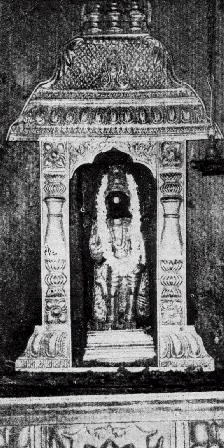 The Tirunallar temple is a one of a kind temple with a shrine of this grandeur exclusively dedicated to Saturn. The architectural features date back to the Chola period and inscriptions dating back to the twelfth century AD are found in the temple.
The Tirunallar temple is a one of a kind temple with a shrine of this grandeur exclusively dedicated to Saturn. The architectural features date back to the Chola period and inscriptions dating back to the twelfth century AD are found in the temple.
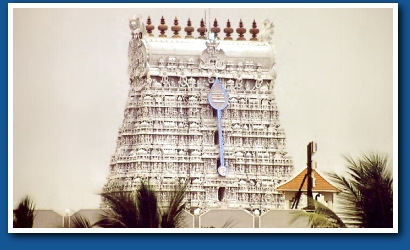

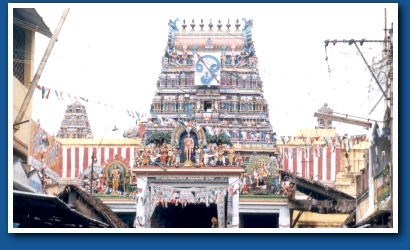
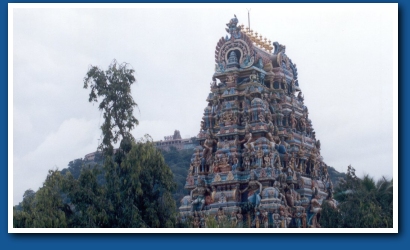
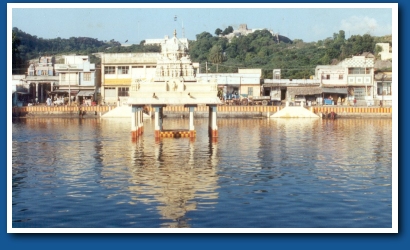
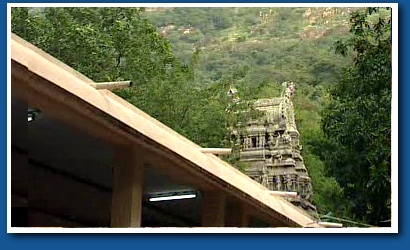



 One of the most vital places around Kanchipuram is the Vedanthangal Bird Sanctuary sitauted about 60 km from Kanchi. On your bird sighting trip to Kanchipuram, one can find many migratory birds like the sandpiper, white ibis, spoonbill, swan and gray wagtail etc. Definitely, a worth visiting place. Another destination around Kanchi is the Elagiri Hill. This hill is a detached and a popular picnic spot in the Eastern Ghats situated at a height of about 1000 m. The healthy climate, natural beauty and a Murugan temple makes it a must visit place.
One of the most vital places around Kanchipuram is the Vedanthangal Bird Sanctuary sitauted about 60 km from Kanchi. On your bird sighting trip to Kanchipuram, one can find many migratory birds like the sandpiper, white ibis, spoonbill, swan and gray wagtail etc. Definitely, a worth visiting place. Another destination around Kanchi is the Elagiri Hill. This hill is a detached and a popular picnic spot in the Eastern Ghats situated at a height of about 1000 m. The healthy climate, natural beauty and a Murugan temple makes it a must visit place.